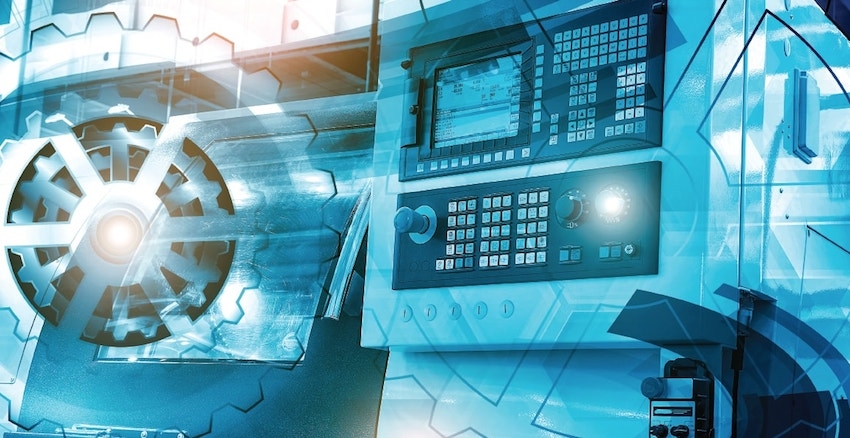
Is your factory future-proof?
October 11, 2017
By Jennifer Rideout
 Photo: Vladimir_Timofeev/iStock/Getty Images Plus
Photo: Vladimir_Timofeev/iStock/Getty Images Plus Oct. 11, 2017 – The Oxford dictionary defines future-proof as ‘(a product or system) unlikely to become obsolete.’ I admit, in an era of unprecedented technology advances, the concept of a future-proof factory floor may seem disingenuous. After all, what is bleeding-edge today will be table stakes tomorrow.
But there are enough commonalities across these advancements in technology that the idea of a future-proof factory should be taken seriously. In a word… Ethernet. The introduction of industrial IT networks to unify, protect and streamline data on the factory floor has revolutionized manufacturing, and that can no longer be ignored.
The advantages an Ethernet IT network creates on the factory floor — improved product quality, machine utilization and a reduction in unplanned downtime, to start — breeds continued success for early adopters. Their advantage multiplies the longer it takes competitors to adopt new technologies. And while an industrial network is a large part of future-proofing your factory floor, ensuring interoperability with technology for years to come, there are other considerations to ensure you have a factory that’s built to last.
Is your factory future-proof? Consider the following.
Must-have #1: Talent
Investing in your people and technology go hand-in-hand. Without the right technology, your people cannot produce their best work. Without the right skills and talent in your organization, even the best technology will go to waste.
A future-proof factory requires the right technology and the right talent to operate it. My colleague dove into this topic a few issues ago, explaining how investments in technology and talent can complement each other.
An investment in video conferencing technology, for example, not only makes it possible to introduce remote troubleshooting and video on the factory floor — it also provides a way to train employees and offer continuing education programs.
Consider this: Do you have the right talent to lead you into the future?
Must-have #2: Cybersecurity
The introduction of Ethernet to the plant floor has created new challenges for IT and manufacturing leaders. One of the most significant is cybersecurity, as factories continue to be one of the most attractive targets for malware and ransomware attacks.
At a minimum, any plans to future-proof your factory must include a defence-in-depth cybersecurity strategy. Yet manufacturing leaders often underestimate the importance of this issue. One-fifth of Canadian manufacturers admitted they have not taken any steps to defend against cyber attacks. Would you trust those companies with your data?
A cybersecurity strategy protects not only your data and equipment, it also increases consumer confidence. And with proper security layers in place, such as an Industrial Demilitarized Zone (IDMZ) and access controls, data goes where you want it to — nowhere else.
Consider this: Are your machines safe from cyber threats?
Must-have #3: The right industrial network
Most factories have an industrial network. The problem is that many legacy industrial networks are flat, with no segmentation of traffic between controls, process devices, supervisory devices, and factory operations. The problem? If an issue arises in one part of your factory — let’s say hackers compromise one machine — there is no barrier from that machine to the rest of your floor. Or, if the single switch networking your PLCs and HMIs fails, the damage to production could be debilitating.
The other risk of a flat network is bandwidth. Factory managers run the risk of adding devices that can’t be supported, out-scaling the network and causing outages.
The right industrial network follows a segmented design architecture, so traffic is routed properly, securely and without data loss. That same architecture should prioritize network redundancy, so if one switch fails, another picks up the excess traffic. Production stays online, your machines are secure, and your network can handle the addition of new machines moving forward.
Consider this: Is your industrial network flat?
Must-have #4: Culture
Building a factory for the future requires leadership. Implementing the items above requires significant financial, time and human resource investments that should not be ignored. To be successful, leadership must fully commit to these changes and initiate a cultural shift for employees to follow. Data supports that manufacturers who make these changes see improvements in factory productivity, uptime, and machine health. Introducing these concepts to leadership and having a conversation around factory vulnerability is a good way to gauge readiness for a future-proof factory.
Consider this: Has your company’s leadership embraced the adoption of advanced technology?
The demand from customers for highly personalized, ready-made products will not decrease. The manufacturers that can deliver on these expectations will have the technology, people and culture to thrive in the digital era.
Will that be you? Only time will tell.
Jennifer Rideout is the manufacturing marketing manager for Cisco Canada. She is responsible for developing go-to-market strategies for the manufacturing sector in Canada, including channel alignment and content development. She can be contacted at jerideou@cisco.com.
This column was originally published in the October 2017 issue of Manufacturing AUTOMATION.